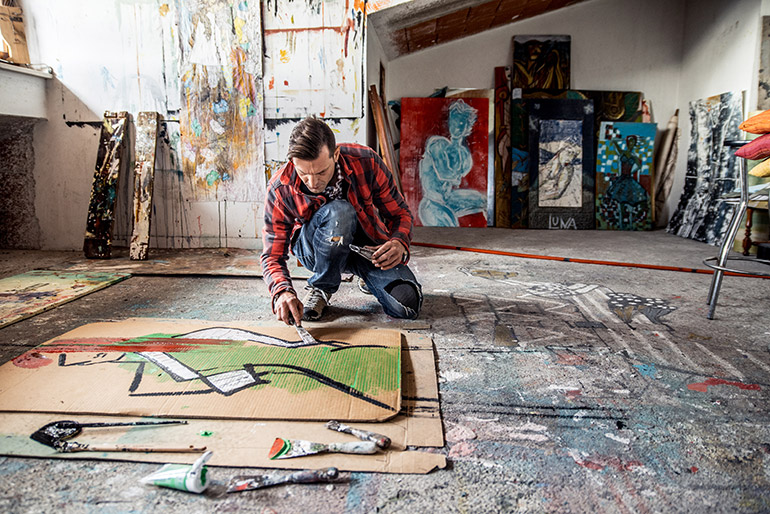
Lots of people are using creative ideas like painting to keep busy during times of self-isolation and social distancing.
UBCO researcher explores the science behind imagination
A new study from UBC’s Okanagan campus is shedding light into how human creativity works and how novel ideas are formed—something the study’s researchers say is becoming increasingly important.
“The more the world changes, the more we need creative ideas,” says Liane Gabora, a UBC Okanagan psychology professor and creativity researcher.
But how do people come up with these innovative solutions?
“Most creativity research is done on the final products of creativity—the finished work of art, or novel or technological invention,” says Gabora. “Yet when people talk about the ‘magic’ of creativity, by the time the final product exists, that ‘magic’ is over.”
The creative process has long been believed to involve searching memory and generating multiple independent ‘candidate’ ideas, followed by selection and refinement of the most promising. But Gabora suspects something else is happening during the creative process.
She proposes that the mental representation of an unborn idea may take different outward forms when looked at from different perspectives. What appears to be discrete, separate ideas can be described mathematically as different projections of the same underlying mental representation. As creative thought proceeds, this representation loses the potential to be viewed from different perspectives and manifest as different outcomes.
This theory, referred to as honing theory, grew out of the neuroscience of how memories are encoded and retrieved, and by studying mathematical models of concept combinations and interactions.
“We are constantly re-organizing our internal webs of knowledge and memory,” explains Gabora. “When we retrieve an item in a new context, it can generate emergent properties that are neither properties of the memory, nor of the context; they emerge as something totally new when the two combine.”
Gabora points to the invention of the kitchen island as an example.
“An island, we all agree, has the defining property of being surrounded by water,” she says. “However, we effortlessly accept that this is not a property of the compound concept kitchen island—because if your kitchen island is surrounded by water, you’re in trouble. But the property emerges when island appears in the concept kitchen.”
Gabora says to truly understand how the creative process works, one has to study the states of creative ideas midway through the creative process. She and four undergraduate researchers at UBCO recently conducted studies that did just that—publishing their results in Acta Psychologica.
Gabora and her team conducted two studies to test her theory. In the first, participants were interrupted midway through solving an analogy problem, writing down what they were thinking in terms of a solution. In the second, participants were instructed to create a painting that expressed their true essence and describe how they conceived of it.
For both studies, unbiased judges categorized responses as supportive of either the conventional or honing theory view.
To Gabora’s delight, the results were most consistent with honing theory, providing further evidence that her research is on the right track.
“This is exciting because having a deeper understanding of how the creative process works psychologically can greatly benefit society moving forward,” she says.
“If we can understand the mental progressions occurring during the creative process, we can better understand the steps involved in the generation of the world’s greatest masterpieces, and potentially pave the way to the next masterpieces,” she says.
Gabora adds that during times of rapid change such as a pandemic, understanding the creative process is more important than ever.
“A key step is appreciating how each person’s uniqueness gives them a potential to create in ways that are uniquely theirs. Whether it’s creating a new kind of robot, making a new delicious kind of sourdough bread or writing country music’s next big hit—our potential is endless.”
About UBC’s Okanagan campus
UBC’s Okanagan campus is an innovative hub for research and learning founded in 2005 in partnership with local Indigenous peoples, the Syilx Okanagan Nation, in whose territory the campus resides. As part of UBC—ranked among the world’s top 20 public universities—the Okanagan campus combines a globally recognized UBC education with a tight-knit and entrepreneurial community that welcomes students and faculty from around the world in British Columbia’s stunning Okanagan Valley.
To find out more, visit: ok.ubc.ca